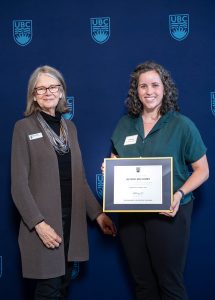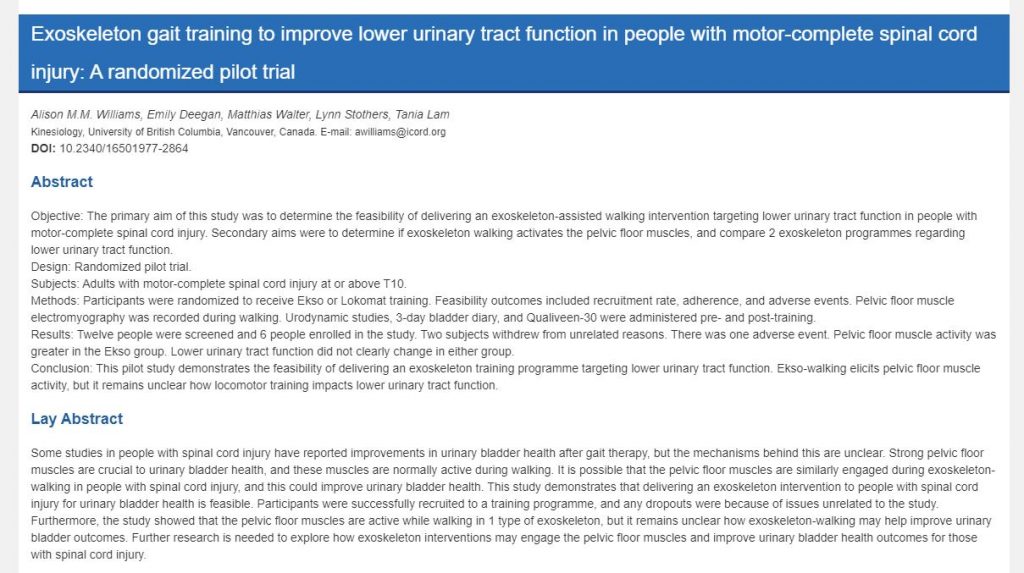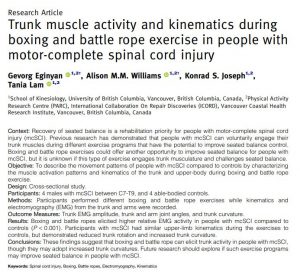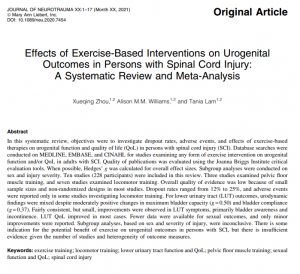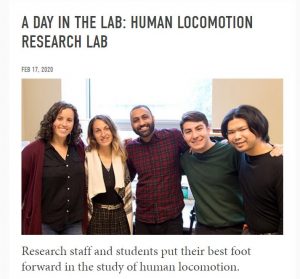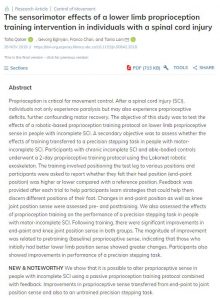Congratulations to Ali, who was awarded a President’s Award for Enhancing the UBC Experience! Ali was recognized for the incredible level and depth of support, community-building, and all-around excellence she brings to her work. We are so proud of you!
Read more about Ali’s award here.
Category Archives: news and events
What do people with spinal cord injury think of pelvic floor muscle training?
Former undergraduate student and now lab staff member, Maya, recently published an article on the knowledge, attitudes, and practices related to pelvic floor muscle training among people with spinal cord injury. This survey included people with SCI from across North America and revealed that that while people with SCI are interested in this type of therapy, very few people have tried pelvic floor muscle training. Read the full article here!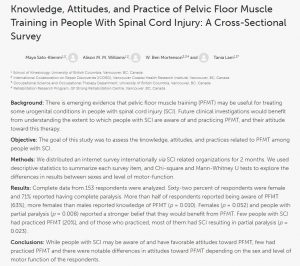
Exploring pelvic floor muscle activity during gait
Our recent publication explores how the pelvic floor muscles are active during walking and jogging in able-bodied men and women. This is the first paper to characterize pelvic floor muscle activity during the entire gait cycle and hints at how these muscles work during physical activity to prevent incontinence. Check out the full paper here.
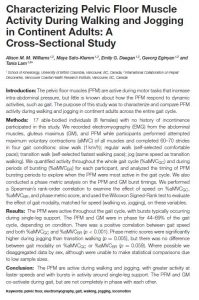 Special thanks to everyone who participated in this study!
Special thanks to everyone who participated in this study!
Gevorg Defends
Congratulations to our Master’s student, Gevorg, who successfully defended his thesis “The effect of transcutaneous tibial nerve stimulation on the corticomotor excitability of the abductor hallucis and pelvic floor muscles” in August 2021.
We wish Gevorg all the very best in his next academic chapter at UBC’s Masters of Physical Therapy program.
Gevorg’s thesis is available through UBC cIRcLe here.
Can we use exoskeleton-assisted walking to improve urogenital outcomes?
Check out our recent publication on the effects of exoskeleton-assisted walking to improve urogenital outcomes, such as urinary incontinence, for people with spinal cord injury. Preliminary data from this paper was first presented by Dr. Lam at the 2019 International Continence Society in Sweden, and we are excited to publish the final results! Read the full paper here.
New publication on seated boxing for spinal cord injury
Our Master’s student, Gevorg, and Lab Manager, Ali, published an article about the effects of seated boxing and battle rope exercises on trunk muscle activity for people with motor-complete spinal cord injury. This paper adds to the growing body of literature that people with high-thoracic and cervical motor-complete injuries have some degree of voluntary muscle activation in their abdominal and lower back muscles. Read the whole publication here.
This work was a part of Konrad’s undergraduate directed studies project. Way to go team!
New publication on exercise-based therapies for urogenital health
Our undergraduate student, Xueqing Zhou, recently published a systematic review and meta-analysis on how exercise-based therapies may help improve urogenital outcomes in people with spinal cord injury. Our findings suggest that there may be some benefit of exercise therapies for bladder and sexual health, but current evidence is insufficient to make any recommendations at this time. The full paper can be found here.
This manuscript was developed from Xueqing’s undergraduate directed studies project – well done, Xueqing!
SCIRE Neuromodulation Video Features Lam Lab
The Human Locomotion lab was featured in a video on neuromodulation by Spinal Cord Injury Research Evidence (SCIRE) Project in March 2020. SCIRE’s goal is to provide up-to-date and accurate information about the effects of rehabilitation healthcare for people with spinal cord injury, and communicate this information in both scientific everyday language. To see us, watch the video below!
https://www.youtube.com/watch?v=rr_A8fq0ZM8
“A Day in the Lab”: VCHRI Features Lam Lab
In February 2020, the Lam Lab was featured in VCHRI’s ongoing segment “A Day in the Lab”. Our team spent the afternoon discussing our research and demonstrating equipment with VCHRI staffers. Our highlight was being able to put VCHRI Community Outreach Coordinator Marc Saunders in the Ekso! To read their article, click here.
New Publication on Proprioception Training after SCI
Previous student Taha Qaiser published the findings of his Masters in November 2019 which described the use of passive proprioceptive training for individuals with an incomplete SCI. Proprioceptive training resulted in significant improvements in end point and knee joint position sense. Click to read more!
Congratulations to authors Taha Qaiser, Gevorg Eginyan, Franco Chan and Dr. Tania Lam.
